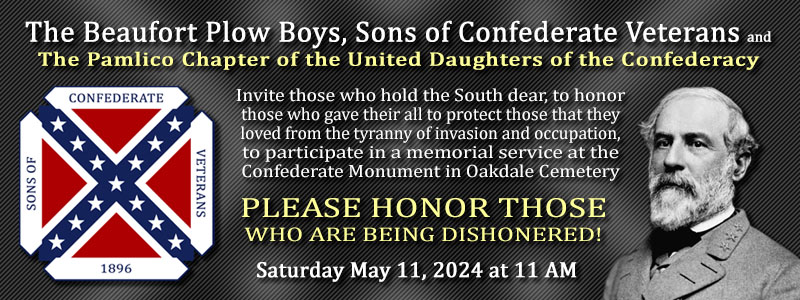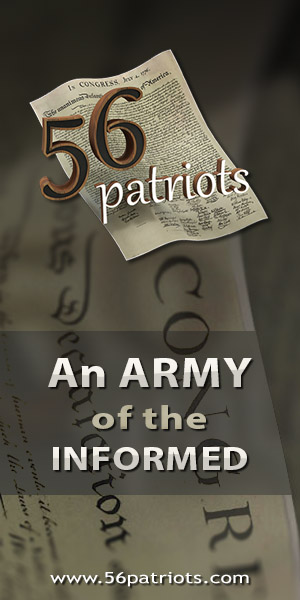Our Community Platform providing Essential Information to Know what is Real
Part I - ANATOMY of a SUPREME COURT CASE: District of Columbia v. Heller (2008)
Clark Neily, who we will meet very shortly, considered Kates' article in the Michigan Law Review the "seminal work" on the Individual Rights theory of the Second Amendment. It had a profound impact on his view of gun rights. To be fair, Kates didn't deny that the Founding Fathers were concerned primarily with the militia when they conceived of, drafted, and adopted the Second Amendment, but the evidence (according to Kates) suggests that it was precisely by protecting the individual in his right to keep and bear arms that the Framers intended to protect the militia. As long as individuals had the fundamental right to keep and bear arms, unburdened by government, the militia would always exist. "The one thing all the Framers agreed on was the desirability of allowing citizens to arm themselves," he wrote in his article. The Second Amendment was designed to keep the government from disarming the civilian population. And this makes sense being that it was the King George's command to disarm the colonists that led to the shots that started the fight for independence. [Ibid]
In his research into the debates of the states in their ratifying conventions (1787-1790), Don Kates found that the number of states that recommended adding a guarantee of the right to have guns outnumbered those that recommended adding other rights. "Amending the Constitution to assure the right to arms was endorsed by five state ratifying conventions. By comparison, only four states suggested that the rights to assemble, to due process, and against cruel and unusual punishment be guaranteed, and only three states suggested that freedom of speech be guaranteed." [Don Kates, "Handgun Prohibition and the Original Meaning of the Second Amendment," Michigan Law Review].
While the wording of the Second Amendment had confused generations of Americans, Kates sought to actually understood what those words meant to the Founding Fathers (which is an "originalist" approach). Supporters of the "Militia Theory" of the amendment saw the grant of the right to keep and bear arms "to the people," which seemed to indicate a collective right. That is, only when individuals assembled to form a militia does the Second Amendment protect their right to have and bear arms. It would also offer guidance as to which firearms would likely be protected. But Kates' Michigan Law Review article offered a different explanation. A simple look at the Bill of Rights shows many other examples of provisions where the Founding Fathers and drafters took the phrase "the right of the people" to mean individual rights. The First Amendment, for example, refers to the right of the people... to petition the government for a redress of grievances."The Fourth Amendment refers to the "right of the people to be secure in their persons, houses, papers, and effects, against unreasonable searches and seizures." The Tenth Amendment explicitly distinguished "the people" from "the States," providing that the "powers delegated" to Congress "are reserved to the States respectively, or to the People." So, then, a reading of the Second Amendment... "the right of the people to keep and bear arms, shall not be infringed" would indicate that an individual right to be armed is articulated. [Ibid]
In 1989, one of the foremost liberal constitutional law professors in the country, Sanford Levinson, published an article in the Yale Law Journal endorsing Kates' view of the Second Amendment. [Sanford Levinson, "The Embarrassing Second Amendment," Yale Law Review 99 (1989): 637].
In the years following Kates' article in the Michigan Law Review, and particularly in the years 1989-1995, more academic research was done regarding the Second Amendment than had been done in the previous 200 years.
Kates would become the most influential proponent of the view that the Founding Fathers intended the Second Amendment to guarantee the right of private individuals to own firearms for their protection and that of their families.
So then comes the turn of the century... early 2002. Legal scholars began to wonder what exactly is the nature of the right guaranteed by the Second Amendment. There has been growing scholarship on the original meaning of the Second Amendment which tended to protect both the right to bear arms to serve in a militia and to bear arms for self-protection yet the prevailing earlier view had been the Collective or Militia Theory only.
What does the Second Amendment really mean? Does it only assure Americans that Congress would NOT have the power to destroy state militias by disarming the people? Or does it also assure Americans that Congress will NOT have the power to deny their right to have firearms for self-protection? Does it confer a Collective right or also an Individual Right?
"A well-regulated Militia, being necessary to the security of a free State, the right of the people to keep and bear Arms, shall not be infringed." [Collective Right]
"A well-regulated Militia, being necessary to the security of a free State, the right of the people to keep and bear Arms, shall not be infringed." [Individual Right]
OR, are there two types of gun rights articulated? Are there two types of rights that "Shall Not be Infringed" - the right of a state to have a well-regulated militia (hence, individuals, which necessarily comprise the militia, must have the right to keep and bear arms to serve in it) and right of the individual to keep and bear arms for personal protection. Again, both of these reflect a general right of self-defense and preservation and both absolutely are grounded in the right of the individual to keep and bear arms.
The question was this: Would the Supreme Court be willing - finally - to rule on a modern-day Second Amendment case? Would the time be right? Would the Court be likely to embrace the new and growing view of the Second Amendment, which is that it guarantees the individual a right to keep and bear arms for self-defense and self-protection (including against a tyrannical government)?
At a happy hour in DC in early 2002, two young lawyers who worked at the Institute for Justice, Clark Neily III and Steve Simpson, were drinking and talking constitutional law - always a powerful combination. Their discussion turned to the right to bear arms. They noted that for too many decades, the federal courts held that the Second Amendment protected only the right to have guns for the purpose of serving in a state militia, but that over the past 15-20 years or so, there have been important developments in the understanding and history of the amendment. Characterizing themselves as libertarians, the believed that it is individuals who should be able to decide for themselves how best to safeguard their lives and to protect their homes and their families, without government insinuating its political agenda. In their alcohol-induced legal excitement, they suggested that the time might be ripe to get the Supreme Court to reconsider the meaning of the Second Amendment.
The Growing Scholarship and the Shift in the Understanding of the Meaning of The Second Amendment:
• Robert Sprecher's article in the American Bar Association Journal (1965)
• Don Kates' article in the Michigan Law Review (1983)
• Sanford Levinson's article in the Yale Law Journal (1989) .
President George W. Bush, through his Attorney General John Ashcroft, announced his administration's rejection of long-standing White House policy regarding the Second Amendment (Bush rejected the Militia Theory in favor the Individual Right's view). The NRA, a major backer of Bush, supported him on this policy change.
In 2001, the Fifth Circuit Court of Appeals (in Texas) took Ashcroft's cue and held that earlier rulings interpreting the Second Amendment to apply only to state militias had been wrong. "The original meaning of the Second Amendment was to guarantee individuals, not just militias, the right to bear arms." [United States v. Emerson]. ** This case marked a profound shift in Second Amendment jurisprudence.
In the 1980's, President Ronald Reagan's attorney general, Edwin Meese III sought to add as many strong conservative judges and justices to the federal court ystem. He particularly sought to appoint those who adopted the philosophy of Originalism. During his first two years in office, President Reagan appointed half of the federal judges in America, along with three new Supreme Court justices.
The Supreme Court declined to hear the Everson case. Everson was a gun owner who had threatened to hurt innocent people, and because of his threats, had a restraining order against him by a court of law. Perhaps the Court declined to take the case because the person challenging the gun control law, Timothy Joe Everson, was a dangerous man; he was an offensive challenger. Perhaps, as Neily and Simpson, reasoned, the Supreme Court might be more inclined to hear a Second Amendment case if it involved a law-abiding person who simply wanted or needed to own a gun for self-defense.
Publisher's note: This ends the first part of this multi-part series by Diane Rufino examining District of Columbia v. Heller (2008). Part I and all succeeding parts of this mammoth treatise can be found here.
Go Back
In his research into the debates of the states in their ratifying conventions (1787-1790), Don Kates found that the number of states that recommended adding a guarantee of the right to have guns outnumbered those that recommended adding other rights. "Amending the Constitution to assure the right to arms was endorsed by five state ratifying conventions. By comparison, only four states suggested that the rights to assemble, to due process, and against cruel and unusual punishment be guaranteed, and only three states suggested that freedom of speech be guaranteed." [Don Kates, "Handgun Prohibition and the Original Meaning of the Second Amendment," Michigan Law Review].
While the wording of the Second Amendment had confused generations of Americans, Kates sought to actually understood what those words meant to the Founding Fathers (which is an "originalist" approach). Supporters of the "Militia Theory" of the amendment saw the grant of the right to keep and bear arms "to the people," which seemed to indicate a collective right. That is, only when individuals assembled to form a militia does the Second Amendment protect their right to have and bear arms. It would also offer guidance as to which firearms would likely be protected. But Kates' Michigan Law Review article offered a different explanation. A simple look at the Bill of Rights shows many other examples of provisions where the Founding Fathers and drafters took the phrase "the right of the people" to mean individual rights. The First Amendment, for example, refers to the right of the people... to petition the government for a redress of grievances."The Fourth Amendment refers to the "right of the people to be secure in their persons, houses, papers, and effects, against unreasonable searches and seizures." The Tenth Amendment explicitly distinguished "the people" from "the States," providing that the "powers delegated" to Congress "are reserved to the States respectively, or to the People." So, then, a reading of the Second Amendment... "the right of the people to keep and bear arms, shall not be infringed" would indicate that an individual right to be armed is articulated. [Ibid]
In 1989, one of the foremost liberal constitutional law professors in the country, Sanford Levinson, published an article in the Yale Law Journal endorsing Kates' view of the Second Amendment. [Sanford Levinson, "The Embarrassing Second Amendment," Yale Law Review 99 (1989): 637].
In the years following Kates' article in the Michigan Law Review, and particularly in the years 1989-1995, more academic research was done regarding the Second Amendment than had been done in the previous 200 years.
Kates would become the most influential proponent of the view that the Founding Fathers intended the Second Amendment to guarantee the right of private individuals to own firearms for their protection and that of their families.
So then comes the turn of the century... early 2002. Legal scholars began to wonder what exactly is the nature of the right guaranteed by the Second Amendment. There has been growing scholarship on the original meaning of the Second Amendment which tended to protect both the right to bear arms to serve in a militia and to bear arms for self-protection yet the prevailing earlier view had been the Collective or Militia Theory only.
What does the Second Amendment really mean? Does it only assure Americans that Congress would NOT have the power to destroy state militias by disarming the people? Or does it also assure Americans that Congress will NOT have the power to deny their right to have firearms for self-protection? Does it confer a Collective right or also an Individual Right?
"A well-regulated Militia, being necessary to the security of a free State, the right of the people to keep and bear Arms, shall not be infringed." [Collective Right]
"A well-regulated Militia, being necessary to the security of a free State, the right of the people to keep and bear Arms, shall not be infringed." [Individual Right]
OR, are there two types of gun rights articulated? Are there two types of rights that "Shall Not be Infringed" - the right of a state to have a well-regulated militia (hence, individuals, which necessarily comprise the militia, must have the right to keep and bear arms to serve in it) and right of the individual to keep and bear arms for personal protection. Again, both of these reflect a general right of self-defense and preservation and both absolutely are grounded in the right of the individual to keep and bear arms.
The question was this: Would the Supreme Court be willing - finally - to rule on a modern-day Second Amendment case? Would the time be right? Would the Court be likely to embrace the new and growing view of the Second Amendment, which is that it guarantees the individual a right to keep and bear arms for self-defense and self-protection (including against a tyrannical government)?
At a happy hour in DC in early 2002, two young lawyers who worked at the Institute for Justice, Clark Neily III and Steve Simpson, were drinking and talking constitutional law - always a powerful combination. Their discussion turned to the right to bear arms. They noted that for too many decades, the federal courts held that the Second Amendment protected only the right to have guns for the purpose of serving in a state militia, but that over the past 15-20 years or so, there have been important developments in the understanding and history of the amendment. Characterizing themselves as libertarians, the believed that it is individuals who should be able to decide for themselves how best to safeguard their lives and to protect their homes and their families, without government insinuating its political agenda. In their alcohol-induced legal excitement, they suggested that the time might be ripe to get the Supreme Court to reconsider the meaning of the Second Amendment.
The Growing Scholarship and the Shift in the Understanding of the Meaning of The Second Amendment:
• Robert Sprecher's article in the American Bar Association Journal (1965)
• Don Kates' article in the Michigan Law Review (1983)
• Sanford Levinson's article in the Yale Law Journal (1989) .
President George W. Bush, through his Attorney General John Ashcroft, announced his administration's rejection of long-standing White House policy regarding the Second Amendment (Bush rejected the Militia Theory in favor the Individual Right's view). The NRA, a major backer of Bush, supported him on this policy change.
In 2001, the Fifth Circuit Court of Appeals (in Texas) took Ashcroft's cue and held that earlier rulings interpreting the Second Amendment to apply only to state militias had been wrong. "The original meaning of the Second Amendment was to guarantee individuals, not just militias, the right to bear arms." [United States v. Emerson]. ** This case marked a profound shift in Second Amendment jurisprudence.
In the 1980's, President Ronald Reagan's attorney general, Edwin Meese III sought to add as many strong conservative judges and justices to the federal court ystem. He particularly sought to appoint those who adopted the philosophy of Originalism. During his first two years in office, President Reagan appointed half of the federal judges in America, along with three new Supreme Court justices.
The Supreme Court declined to hear the Everson case. Everson was a gun owner who had threatened to hurt innocent people, and because of his threats, had a restraining order against him by a court of law. Perhaps the Court declined to take the case because the person challenging the gun control law, Timothy Joe Everson, was a dangerous man; he was an offensive challenger. Perhaps, as Neily and Simpson, reasoned, the Supreme Court might be more inclined to hear a Second Amendment case if it involved a law-abiding person who simply wanted or needed to own a gun for self-defense.
Publisher's note: This ends the first part of this multi-part series by Diane Rufino examining District of Columbia v. Heller (2008). Part I and all succeeding parts of this mammoth treatise can be found here.























